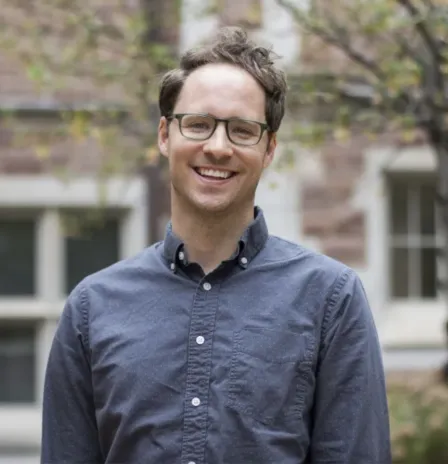“Happiness isn’t one-size-fits-all,” said Joshua Jackson, a WashU researcher. Physical and mental well-being or good relationships can help some people, but as Jackson's new study explores, there are many sources of a happy life — from without and within.
If you’re looking for a roadmap to happiness you can expect a lot of intersections, detours, and alternate routes. A new study of more than 40,000 people in different parts of the world found that there’s no single predictable source of a happy life. Some people find happiness in their circumstances, such as their social class or physical health, but just as many people seem to create happiness on their own.

“Happiness isn’t one-size-fits-all,” said co-author Joshua Jackson, the Saul and Louise Rosenzweig Associate Professor of Personality Science and an associate professor of psychological and brain sciences. “Happiness is highly individualized, and it comes from many different places.”
The study, published in Nature Human Behavior, was led by WashU alum Emorie Beck, PhD ’20, now at the University of California, Davis. Other co-authors were Felix Cheung, a former WashU postdoctoral fellow now at the University of Toronto, and University of Tulsa researcher Stuti Thapa.
To better understand the origins of happiness, researchers analyzed the data from five long-term studies of 40,074 people in Australia, Germany, the UK, Switzerland, and the Netherlands. The survey, which followed the same people for more than 30 years, tracked changes in life satisfaction as well as major life circumstances, including their physical and mental health, job, income, community, relationships, and housing. “It’s valuable and very unusual to have a study that spans decades,” Jackson said of the research.
Jackson and the researchers found that the study participants took different paths to find happiness. The results varied a bit from country to country, but roughly one-quarter of all participants seemed to peg their life satisfaction to their circumstances. If they landed their dream job, got married, had good relationships, or had another positive life event, their sense of happiness shot up. On the downside, they were sensitive to life’s ups and downs.
A similar number of people seemed to maintain the same basic levels of happiness no matter what was happening in their lives, a sign that their source of happiness was mainly internal. “Some people can be happy with very little,” Jackson said. “And some people aren’t happy even when things are going well.”
The picture for the rest of the participants was less clear. Some seemed to respond strongly to both internal and external influences, while others seemed to go through periods of satisfaction or dissatisfaction for no rhyme or reason. Much like life itself, happiness can be chaotic.
The participants in the study were all from stable and wealthy countries where happiness is a relatively common occurrence. Jackson notes that happiness can be scarce in countries ravaged by war and food insecurity. At the other end of the spectrum, Nordic countries such as Finland, Denmark, and Sweden — countries in which social welfare and economic equality is deeply ingrained — consistently rank near the top of the happiest countries in the world.
The different paths to joy make it difficult to offer blanket advice for a person to find happiness, Jackson said. “Keeping a gratitude journal that lists the positive details of your day or life may help some people feel happier, but our findings suggest that this approach won’t work for everyone,” he said. He added that many people can boost happiness levels by improving the basic facts of their lives, such as getting regular exercise or physical activity to improve well-being, landing a promotion at work, or finding a romantic partner. “But while that may work for many, it may not work for you.”
The takeaway message: There’s no single route to a happy life. But there’s a good chance you can at least point yourself in the right direction.
Header image credit: Pixabay/Pexels





